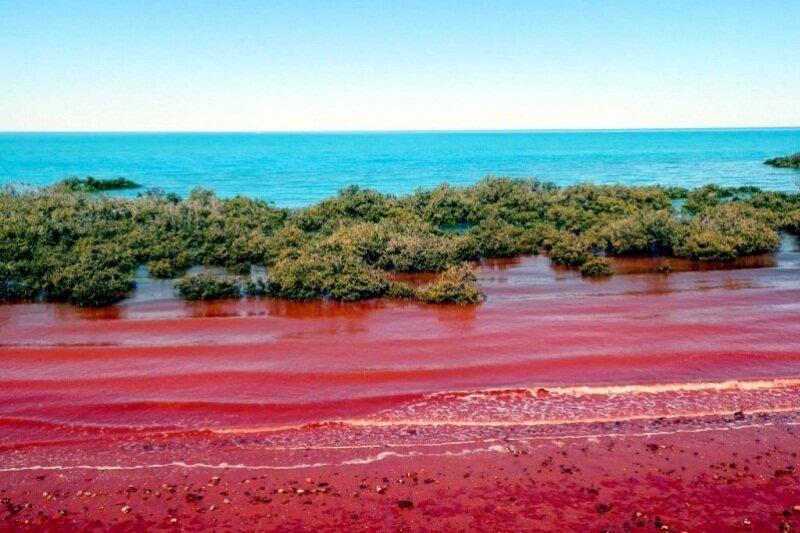Algal bloom a colorful threat to aquatic ecosystem

TEHRAN – "Algal blooms" have negative effects on aquatic environments and bring losses to the fisheries sector, which is mainly caused by various factors such as climate change, rising temperatures, the entry of industrial, domestic, agricultural, and human effluents.
An algal bloom or algae bloom is a rapid increase or accumulation in the population of algae in freshwater or marine water systems. It is often recognized by the discoloration in the water from the algae's pigments.
The term algae encompass many types of aquatic photosynthetic organisms, both macroscopic multicellular organisms like seaweed and microscopic unicellular organisms like cyanobacteria. Algal bloom commonly refers to the rapid growth of microscopic unicellular algae, not macroscopic algae. An example of a macroscopic algal bloom is a kelp forest.
An algal bloom is a rapid increase or accumulation in the population of algae in freshwater or marine water systems. Algal blooms are the result of a nutrient, like nitrogen or phosphorus from fertilizer runoff, entering the aquatic system and causing excessive growth of algae. An algal bloom affects the whole ecosystem.
Consequences range from the benign feeding of higher trophic levels to more harmful effects like blocking sunlight from reaching other organisms, causing a depletion of oxygen levels in the water, and, depending on the organism, secreting toxins into the water.
The process of the oversupply of nutrients leading to algae growth and oxygen depletion is called eutrophication. Blooms that can injure animals or the ecology are called "harmful algal blooms" (HAB) and can lead to fish die-offs, cities cutting off water to residents, or states having to close fisheries.
Various factors such as increasing greenhouse gases, hydrological factors, and massive changes in global climate, movement, and transfer of non-native species are involved in the occurrence of algal blooms, the most important of which are rising temperatures in line with climate change and an increase in nutrients, especially phosphorus and nitrate, that enters the seas and then the oceans by discharging industrial, domestic, and agricultural effluents containing chemical fertilizers.
When algal blooms increase and spread over a large area of water, they eventually cause sedimentation and destruction in the gills of the fish, which eventually leads to the death of the fish and other aquatic organisms.
In recent years, the increase in the algal bloom in the Caspian Sea, the Persian Gulf, and Oman Sea has caused great damage to fishermen and locals, in addition to the animal species and aquatic animals.
Recently, Behrouz Abtahi, director of the National Institute of Oceanography and Atmospheric Sciences, said that algal blooms have negative effects on aquatic environments, so monitoring the phenomena in northern and southern waters is on the agenda.
Being of great importance, it is one of the few projects in which countries work together to address the issue on an international scale, he added.
But in the last decade, what has made algal blooms important is the increase in the number and variety of these blooms, partly due to climate change and rising global temperatures.
This bloom has negative effects on aquatic environments so that some changes caused by algal blooms are irreversible, so several strategies are proposed to deal with it, one of which is the use of birds to deal with the thick algal cover.
Manual collection of algae and use of herbicides are known as strategies to deal with this phenomenon, he explained.
FB/MG
